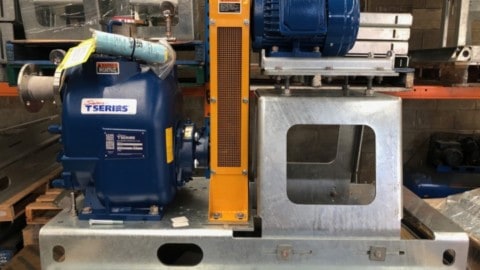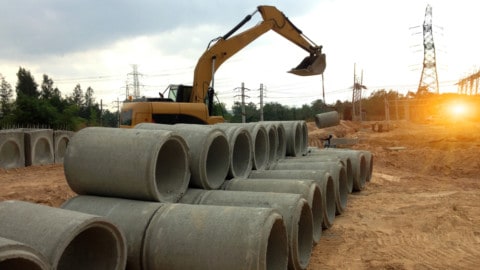By Joe Evans, Pump Ed 101
In a previous issue, we reviewed the drawdown analysis portion of my pump and motor field test spreadsheet. The calculations performed by that section of the spreadsheet provided us the flow and total dynamic head produced by the pump during testing. In this issue, we will review the motor testing section.
Motor testing is important for two reasons.
First, it provides us with the information necessary to calculate horsepower at the test point. Horsepower allows for calculation of pump efficiency at the test point. We can then compare the tested head, flow, horsepower and hydraulic efficiency with those shown on the manufacturers pump curve. Pump efficiency also allows us to monitor the cost per thousand gallons pumped each time we perform a test.
Second, motor testing provides operational data that can be used to identify unhealthy conditions that can lead to premature failure. Motor temperature, loading and the actual supply voltage are important components.
Another factor that has a major influence on submersible pump reliability is unbalanced phase voltage and current. A small voltage unbalance will give rise to a current unbalance that is six to ten times greater. Unbalanced currents increase the stator operating temperature which reduces insulation life. Phase unbalance is one of the largest causes of premature motor failure in the US.
 Figure 1 is the motor test portion of the ‘Submersible Wastewater Pump and Motor Testing’ spreadsheet. As with the pump test portion, the gray cells are entered data and the yellow ones are the calculated results. The equations on the right show how certain results were calculated.
Figure 1 is the motor test portion of the ‘Submersible Wastewater Pump and Motor Testing’ spreadsheet. As with the pump test portion, the gray cells are entered data and the yellow ones are the calculated results. The equations on the right show how certain results were calculated.
The information required includes phase voltage and current, motor nameplate efficiency and power factor (PF) and the power cost per kilowatt hour (kWh). Voltage and current are measured with a high-quality voltmeter and clamp on ammeter. The spreadsheet instructions detail the optional use of kW and PF meters.
The phase voltage and current should be measured at the beginning of the pump down cycle in order to provide an accurate horsepower calculation. They should also be measured on the motor side of the contactor. Contactor corrosion cannot be detected when voltage is measured on the line side. Before or after the pump down test, measure the phase voltage on the line side with the pump off. If any phase voltage unbalance occurs with the pump off, the supply side can be identified as the source of the unbalance.
As seen in Figure 1, the calculated voltage unbalance was 1.1 per cent with the motor off. I have other articles which cover effect of voltage variation and phase unbalance in detail.
The average voltage and current are used to compute the motor horsepower at the test point. The test point horsepower and hydraulic horsepower (assumes 100 per cent pump efficiency) are used to compute the actual pump efficiency at the test point. The cost per thousand gallons pumped is calculated using the equation shown at the bottom right in Figure 1.
It is important to test submersible pumps and motors annually. Changes in system conditions can have a large impact on the pump operating point. This can result in a reduced life for several components including seals, wear rings and bearings. Off BEP operation will also increase the cost per thousand gallons pumped. Unbalanced phase voltage can occur at any time.
Just because they were balanced a year ago doesn’t necessarily mean they will still be balanced this year.
My Field Test spreadsheet is available on the ‘Pump Evaluation, Selection & Testing Tools’ page at PumpEd101.com.


















